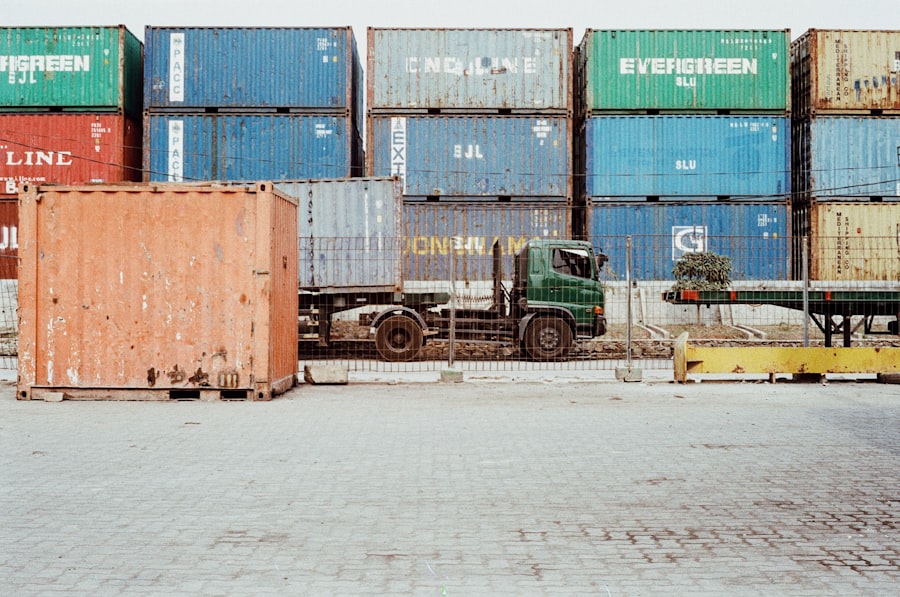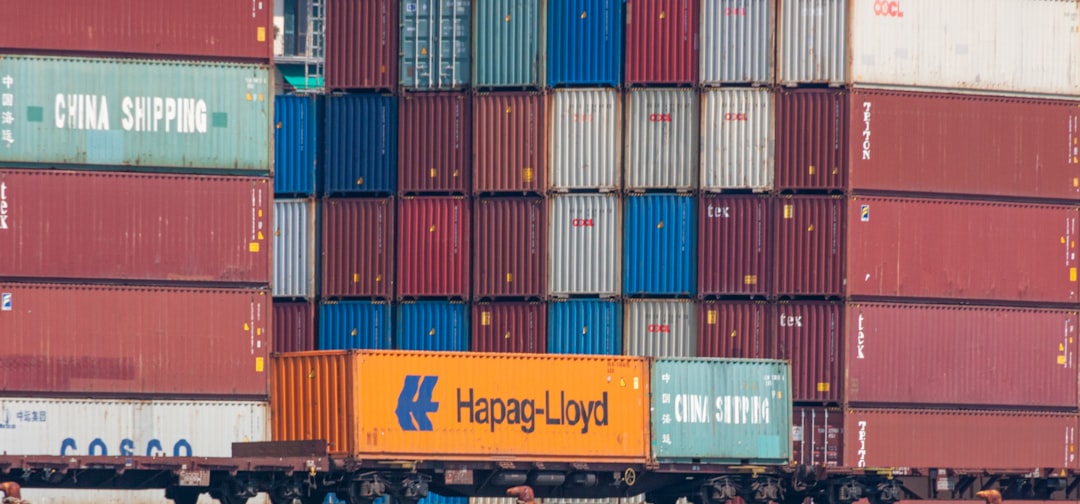As you delve into the complexities of supply chain management, it becomes crucial to grasp the concept of choke points. These are critical junctures in the supply chain where bottlenecks can occur, leading to delays and increased costs. Recognizing these choke points allows you to anticipate potential disruptions and develop strategies to mitigate their impact.
Moreover, understanding choke points extends beyond just physical locations. It also encompasses processes and systems that may hinder efficiency.
For example, if your inventory management system is outdated, it could lead to inaccuracies in stock levels, resulting in overstocking or stockouts. By identifying these inefficiencies, you can implement improvements that streamline operations and enhance overall supply chain performance.
Key Takeaways
- Supply chain choke points can disrupt the flow of goods and lead to increased fees and costs.
- Common fees in the supply chain include storage, demurrage, customs, duties, brokerage, handling, fuel surcharges, and more.
- Carrier accessorial fees can be managed through clear communication, negotiation, and careful review of contracts and agreements.
- Strategies for handling storage and demurrage fees include optimizing inventory levels, improving warehouse efficiency, and negotiating favorable terms with suppliers and carriers.
- Navigating customs and duties fees requires understanding trade regulations, leveraging free trade agreements, and working with experienced customs brokers to minimize costs.
Identifying Common Fees in the Supply Chain
In your journey through the supply chain landscape, you will encounter various fees that can significantly impact your bottom line. These fees can arise from multiple sources, including transportation, warehousing, and customs processes. Understanding these common fees is essential for effective budgeting and financial planning.
For instance, freight charges are often one of the most substantial costs in logistics, and they can vary widely based on factors such as distance, weight, and mode of transport. Additionally, you should be aware of ancillary fees that may not be immediately apparent. These can include accessorial charges for services like loading and unloading, as well as fees for expedited shipping or special handling.
By familiarizing yourself with these potential costs, you can better prepare for them and incorporate them into your overall supply chain strategy.
Managing Carrier Accessorial Fees

Carrier accessorial fees can be a significant source of unexpected costs in your supply chain operations. These fees are charged by carriers for additional services beyond standard transportation, such as liftgate service, inside delivery, or waiting time. To effectively manage these fees, it is essential to have a clear understanding of what services may incur additional charges and to communicate this with your logistics partners.
One effective strategy is to negotiate terms with your carriers upfront. By discussing potential accessorial fees during contract negotiations, you can establish clear expectations and avoid surprises later on. Additionally, maintaining open lines of communication with your carriers can help you stay informed about any changes in their fee structures or policies, allowing you to adjust your operations accordingly.
Strategies for Handling Storage and Demurrage Fees
| Strategies | Benefits |
|---|---|
| Optimize inventory management | Reduction in storage fees |
| Negotiate demurrage terms | Lower demurrage costs |
| Implement efficient logistics | Minimize storage and demurrage expenses |
| Utilize technology for tracking | Prevent unnecessary fees |
Storage and demurrage fees can quickly accumulate if not managed properly. Storage fees are typically incurred when goods are held in a warehouse beyond the agreed-upon time frame, while demurrage fees arise when containers are not returned to the shipping line within the specified period. To minimize these costs, it is vital to have a robust inventory management system in place that allows you to track stock levels and turnover rates accurately.
Implementing just-in-time (JIT) inventory practices can also help reduce storage fees by ensuring that goods arrive only when needed. Additionally, establishing clear communication with your suppliers and carriers regarding delivery schedules can help prevent delays that lead to demurrage charges. By proactively managing your inventory and logistics processes, you can significantly reduce the risk of incurring these costly fees.
Navigating Customs and Duties Fees
Customs and duties fees are an inevitable part of international trade that can catch many businesses off guard. These fees are imposed by governments on imported goods and can vary widely depending on the product type and country of origin. To navigate this complex landscape effectively, it is essential to stay informed about the regulations governing customs in the countries where you operate.
One way to mitigate customs-related costs is to work with a knowledgeable customs broker who can guide you through the intricacies of import regulations and help ensure compliance. Additionally, conducting thorough research on tariff classifications for your products can help you avoid overpaying on duties. By taking a proactive approach to customs management, you can minimize delays and unexpected expenses associated with international shipping.
Negotiating Brokerage and Handling Fees

Brokerage and handling fees are another area where you can find opportunities for cost savings within your supply chain. These fees are typically charged by freight forwarders or customs brokers for their services in facilitating the movement of goods across borders. To negotiate these fees effectively, it is essential to understand the value that these services provide and to compare rates from multiple providers.
When entering negotiations, consider discussing volume discounts or bundled services that may lower your overall costs. Additionally, building strong relationships with your brokers can lead to better terms and more favorable pricing over time. By being proactive in managing brokerage and handling fees, you can enhance your supply chain’s efficiency while keeping costs under control.
Addressing Fuel and Environmental Surcharges
Fuel surcharges have become a common aspect of transportation costs in recent years due to fluctuating fuel prices. These surcharges are typically passed on to shippers by carriers as a way to offset rising fuel expenses. To address these surcharges effectively, it is essential to stay informed about current fuel price trends and how they impact transportation costs.
One strategy for managing fuel surcharges is to explore alternative transportation options that may offer more favorable pricing structures. For instance, utilizing intermodal transportation or consolidating shipments can help reduce overall fuel consumption and associated costs. Additionally, consider working with carriers who have implemented fuel-efficient practices or technologies, as this may lead to lower surcharges over time.
Managing Warehousing and Inventory Holding Fees
Warehousing and inventory holding fees can significantly impact your supply chain’s profitability if not managed effectively. These fees are incurred for storing goods in a warehouse and can vary based on factors such as location, space requirements, and duration of storage. To minimize these costs, it is crucial to optimize your inventory levels and turnover rates.
Implementing inventory management software can provide valuable insights into stock levels and help you identify slow-moving items that may be tying up valuable warehouse space. Additionally, consider negotiating warehousing contracts that offer flexible terms based on your business’s seasonal fluctuations. By proactively managing your warehousing needs, you can reduce holding costs while ensuring that you have the right products available when customers demand them.
Handling Invoicing and Payment Processing Fees
Invoicing and payment processing fees are often overlooked but can add up quickly if not managed properly. These fees may arise from various sources, including credit card processing charges or bank transfer fees associated with payments to suppliers or carriers. To handle these costs effectively, it is essential to establish clear invoicing procedures and payment terms with all parties involved in your supply chain.
Consider implementing electronic invoicing systems that streamline the billing process and reduce administrative overhead. Additionally, explore payment options that minimize transaction fees, such as ACH transfers or bulk payment processing solutions. By taking control of your invoicing and payment processes, you can reduce unnecessary expenses while improving cash flow management.
Mitigating Risk and Contingency Planning for Unforeseen Fees
Unforeseen fees can arise at any point in the supply chain due to various factors such as regulatory changes, natural disasters, or sudden market shifts. To mitigate these risks effectively, it is essential to develop contingency plans that outline how your business will respond to unexpected challenges. This may involve setting aside a budget for unforeseen expenses or establishing relationships with alternative suppliers or carriers.
Additionally, conducting regular risk assessments can help you identify potential vulnerabilities within your supply chain and develop strategies to address them proactively. By being prepared for unforeseen circumstances, you can minimize their impact on your operations and maintain a resilient supply chain.
Implementing Technology and Automation to Streamline Fee Management
In today’s fast-paced business environment, leveraging technology and automation is crucial for effective fee management within your supply chain. Various software solutions are available that can help you track expenses, manage invoices, and analyze data related to supply chain costs.
Automation can also streamline processes such as invoicing and payment processing, reducing the risk of human error while improving efficiency. For instance, automated systems can generate invoices based on predefined criteria, ensuring accuracy while saving time for your team. By embracing technology in your fee management practices, you position your business for greater success in an increasingly competitive landscape.
In conclusion, navigating the complexities of supply chain management requires a comprehensive understanding of various fees and strategies for managing them effectively. By recognizing choke points, identifying common fees, negotiating terms with carriers and brokers, and leveraging technology, you can enhance your supply chain’s efficiency while minimizing costs. With proactive planning and a commitment to continuous improvement, you can build a resilient supply chain that supports your business’s growth objectives.
In recent years, the global supply chain has faced numerous challenges, with choke points and increased fees becoming significant concerns for businesses worldwide. These issues have been exacerbated by various factors, including geopolitical tensions, natural disasters, and the ongoing effects of the COVID-19 pandemic. An insightful article on this topic can be found on How Wealth Grows, which delves into the complexities of supply chain management and the financial implications of these disruptions. For a deeper understanding, you can read more about it here.
💸WATCH THIS! The Hidden Tax That Makes Everything You Buy a Scam
FAQs
What are supply chain choke points?
Supply chain choke points are specific locations or nodes within a supply chain where the flow of goods or materials can be disrupted, leading to delays or bottlenecks in the overall supply chain.
What are some examples of supply chain choke points?
Examples of supply chain choke points include ports, shipping lanes, transportation hubs, and key manufacturing facilities. These are areas where congestion, labor strikes, natural disasters, or other disruptions can significantly impact the movement of goods.
How do supply chain choke points impact businesses?
Supply chain choke points can lead to increased costs, delays in production, and shortages of goods. This can ultimately impact a company’s ability to meet customer demand and fulfill orders in a timely manner.
What are supply chain fees?
Supply chain fees are additional costs that may be incurred as a result of using specific transportation routes, ports, or services within the supply chain. These fees can include congestion charges, demurrage fees, and other surcharges.
How do supply chain fees affect businesses?
Supply chain fees can add to the overall cost of production and transportation, impacting a company’s bottom line. These fees can also contribute to delays and inefficiencies within the supply chain, affecting the timely delivery of goods to customers.
